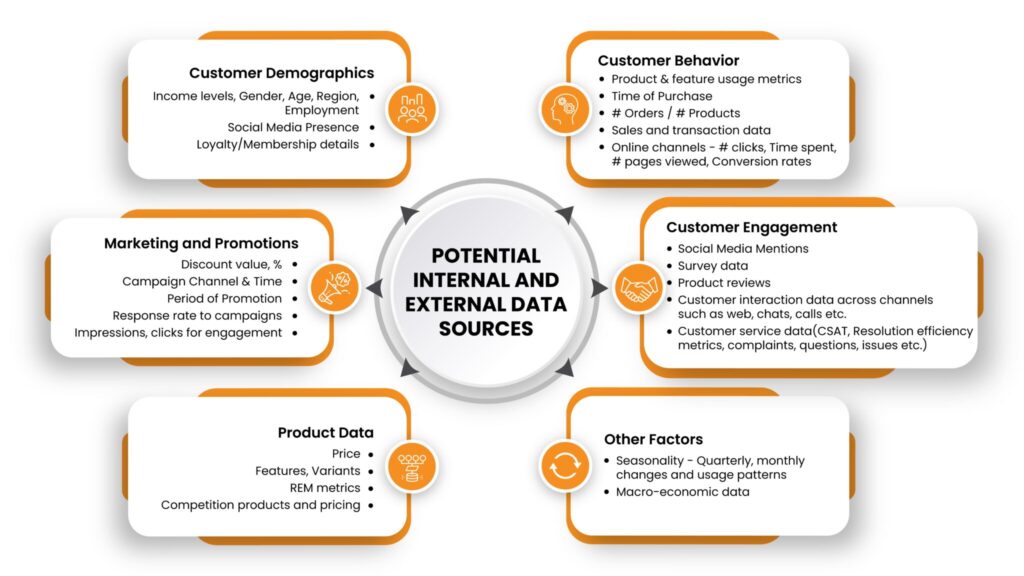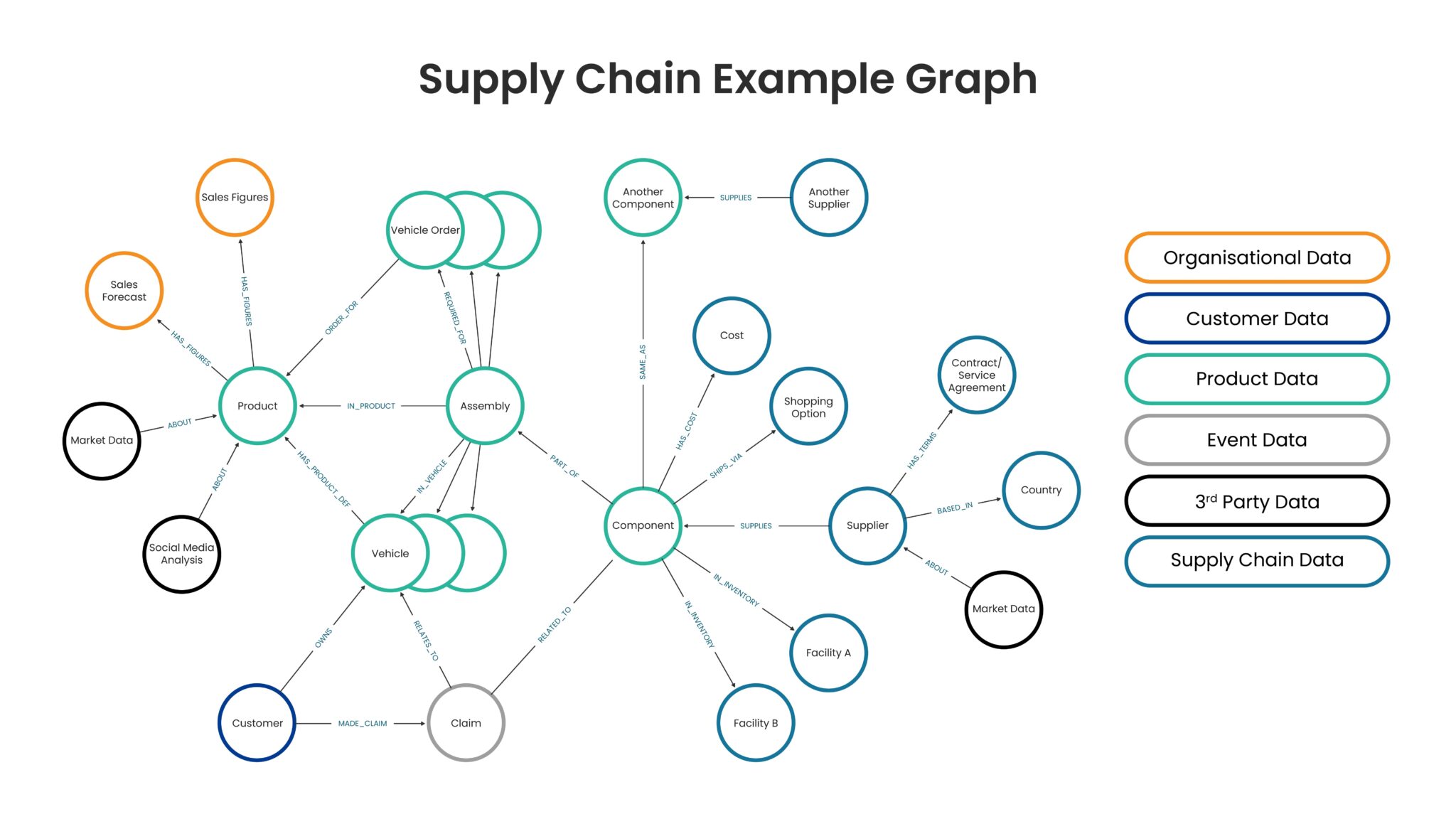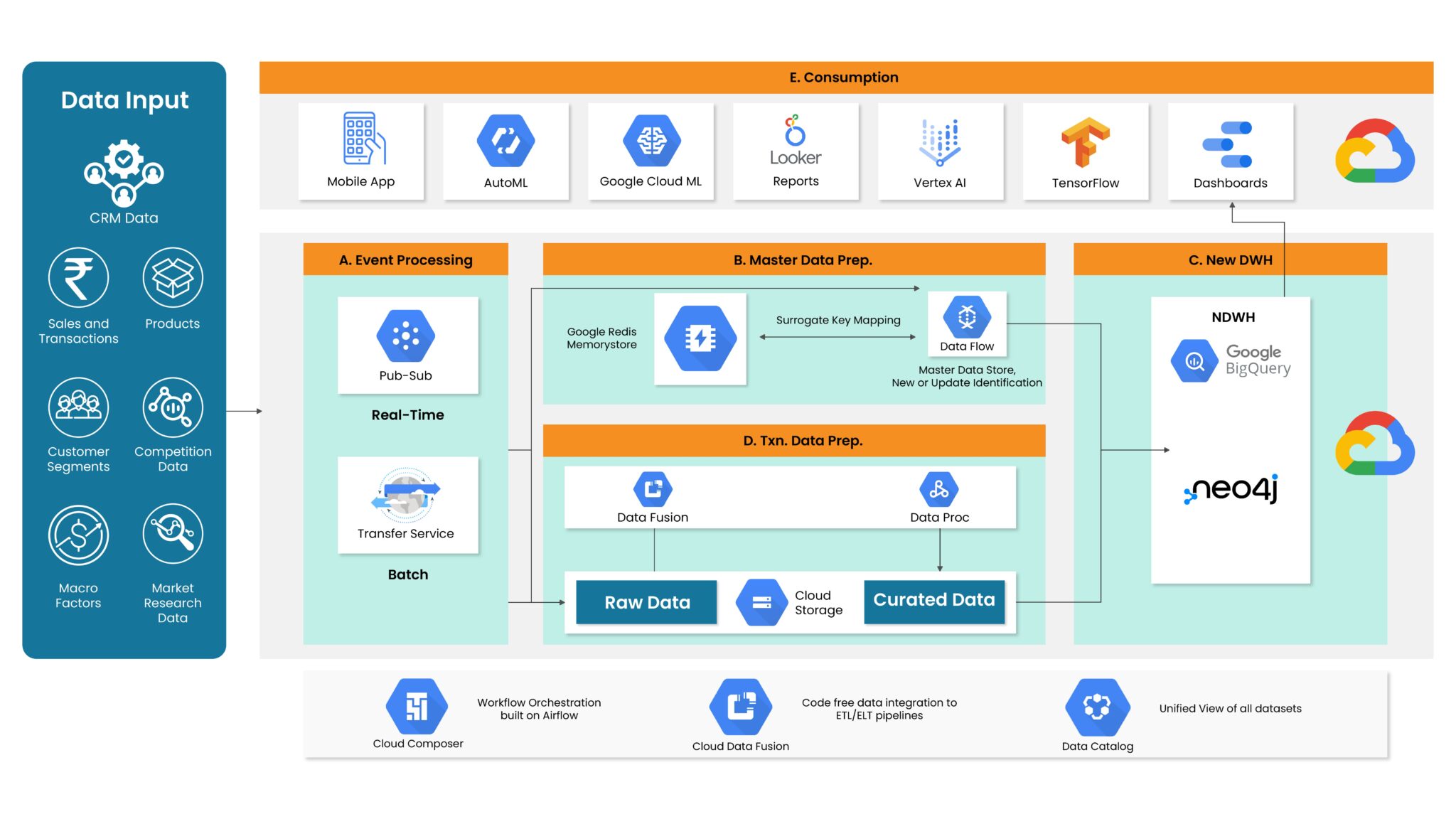What do customers really really want: More options? Value for money? Better quality products? Exciting discounts? With all the data available in the public domain, Sales and Marketing teams can now possess their very own ring of power to figure out what their customers actually desire using a 360-degree Customer View built through GCP.
How it works
Today’s users – whether customers or employees – expect products, applications, and services to be intuitive to their demands. According to research, 4.48 billion people are currently using social media worldwide and approximately 7.74 billion are connected to IoT devices.
From blogs, tweets, mentions, and weblogs to sensors, iBeacons, and smart hangers/bins/racks, there’s a massive treasure trove of data that when accessed and interpreted can help decode customer preferences and deliver personalized experiences.
Personalization already forms a significant metric in serving relevant content to customers. And the business impact of recommended content is pretty evident. Here’s what the data says:
- 80% of Netflix viewer activity is driven by personalized content from the Netflix Recommendation Engine – helping save over $1 billion per year
- 38% of click-through rates on Google News are from recommended links
- 28% of people would like to buy more music, if they find what they like
- Lack of a unified customer record across all channels
- Global distribution online – at home and across stores
- No “golden record” for analytics on customer buying behavior across all channels
- Data repositories on website traffic, POS transactions, and in-home services exist in silos
- No analytics dashboard across all types of data
- Limited ability for targeted marketing to specific segments
- Customer segmentation & Baseline LTV
- Mapping Strategic intents with target customers
- Personalized treatment -Offer, cadence channel
- Beyond the core -expand the offer base, new intents
- Customer Data Platform (CDP)
- ML Orchestration and Integration
- Self-service Platform & BI
- Experimentation & Value Measurement
- Provides a golden record of data insights for targeted, customized marketing
- On-premises data warehouse offload to GCP BigQuery (BQ)
- Unified 360° view for recommendations of similar products
- Analytics dashboard joins clickstream w/ transactional data
- Summary data stored in BigQuery, can be queried with web apps
- Data warehouse offload to BigQuery – saving millions in recurring expenses
- Neo4j AuraDB fully managed graph database for real-time graph-based recommender system
- Data: Clickstream, unstructured, and structured
In the retail space, recommender engines scour through customers’ likes, searches, and shopping carts to curate personalized recommendations based on historical data and shopping behavior. Using Artificial Intelligence and Machine Learning models, the system provides insights into buying intent, shopping preferences, details on why customers switch, what they’ll buy next, and what factors lead them to recommend a brand.
Since most retail organizations already have a recommender engine of some sort, why aren’t all of them able to harness it effectively to derive powerful customer insights?
Here are a few challenges:
At Tiger Analytics, we adopt a modular approach and develop solutions that help in effectively building powerful customer insights.
The Approach:
How building a 360-degree Customer View in GCP can solve this problem
GCP provides several data analytics design patterns, which can be leveraged across industry segments to build analytics solutions like recommendation systems and many more.
GCP delivers targeted marketing and data storage savings and:
– Insights from social media activity
– Purchase history across all channels
Weaving together different data sources for a 360-degree Customer View

360-degree Customer – Graph Schema
Here’s a graphical representation of customer information using concepts of graph theory. Recommendations can be generated in real-time since retrieval and search happen quickly.
The circles indicate nodes representing customers and activities. The ratings/reviews given by the customer to the services are represented as edges that demonstrate the relationship between users and activities. Each node and relation may contain properties to store further details of the data.

360-degree Customer View using GCP BQ and Neo4j
Google Data Cloud provides a portfolio of solutions to facilitate the implementation of these elements of data strategy – right from collecting the data to getting real-time actionable business insights using Google Cloud-native tools, open source, third-party products, and solutions available on the Google marketplace.
Here’s a detailed technical view of the proposed GCP Data Platform architecture:

Going Phygital with the Recommendations and Personalization
According to industry sources, retailers across the world are going back to their offline store formats. In fact, the data shows that in the United States, retailers have so far this year announced 4,432 store openings, compared with 1,954 closings (due to Covid and the pandemic) resulting in a net of 2,478 openings. As the fight over the customer’s wallet continues, brick-and-mortar retailers can steal a page from their online counterparts’ sales strategy by using 360-degree Customer View to gain valuable insights into customer behavior and equip their customer-facing teams with the right information to engage their customers, develop trusted relationships, and achieve positive outcomes like solving customer problems and up-selling/cross-selling products.
In fact, at Tiger Analytics, we’ve used various customer insights generated through GCP to help a major online retailer improve cross-selling, effectively harness micro-data on shopper location, and thus curate personalized shopping experiences – real-time, customized promotions, etc. The historical data we’ve gathered has even provided useful insight into in-store design.
The 360-degree Customer View provides clarity on not only what the customer wants, but also what the retailer needs: improving customer retention, increasing lifetime value, and overall customer service efficiency.
Sources:
http://www.kdnuggets.com/2015/10/big-data-recommendation-systems-change-lives.html
https://www.lighthouselabs.ca/en/blog/how-netflix-uses-data-to-optimize-their-product





